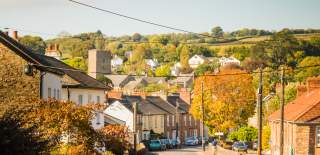There are several reasons why Exeter is known as Devon’s capital – the culture, the bustling city atmosphere, the attractions, the shopping opportunities and of course, the history. Exeter is an incredibly old city and is full of fascinating historical sites, so we’ve picked five of the must visit places to learn more about Exeter’s, and by extension, Devon’s, heritage.
Exeter Cathedral
Obviously, we had to start here, Exeter Cathedral is the city’s most iconic building and can be found right in the centre of the city in the beautiful Cathedral Gardens. As well as operating as a working place of worship, Exeter Cathedral is also runs tours of the building, so you can learn more about its origins and the heritage of the city.
The Cathdedral has been part of the city since the 1100s – that’s when the foundations were first put in and though it has had a couple of facelifts over the years, much of it features the original design and stonework.
Exeter’s City Walls
Like most of Britain’s best loved cities, Exeter was at one point a Roman stronghold and the city walls is one of the best examples of Roman Devon left in the county. Exeter, or Isca Dumnoiorum as it was known then, was home to a fort and an outpost for Roman troops and the wall was added as another line of defence. Over time, the wall was removed or added to and several portions are still intact and dotted around the city for you to see.
Either join a city tour which will take you around the city walls or explore on your own and see how many pieces of the wall you can find.
St Nicholas Priory
This fascinating building is Tudor in origin and was once part of a priory which dates back to around 1000 years ago. After the dissolution of the monasteries, the priory was divided up and this house which still exists was home to a variety of merchants. Today, the house continues to look as it would back in the Elizabethan and Tudor eras and features artefacts from this time period.
As well as being an attraction in its own right, there are occasionally events held around St Nicholas’ Priory which is an experience in itself.
Exe Bridge
The ruins of the Exe Bridge are another historical landscape that you can visit to find out more about the city. During the Medieval period, the River Exe was much wider than it is now and had several wooden bridges that were used to cross it. The first stone bridge was constructed during the 13th century and though it is now in ruins, the bridge can be walked on and the tower of St Edmund’s Church is also visible from here.
Want to find out more about Exeter? Take a look below!



